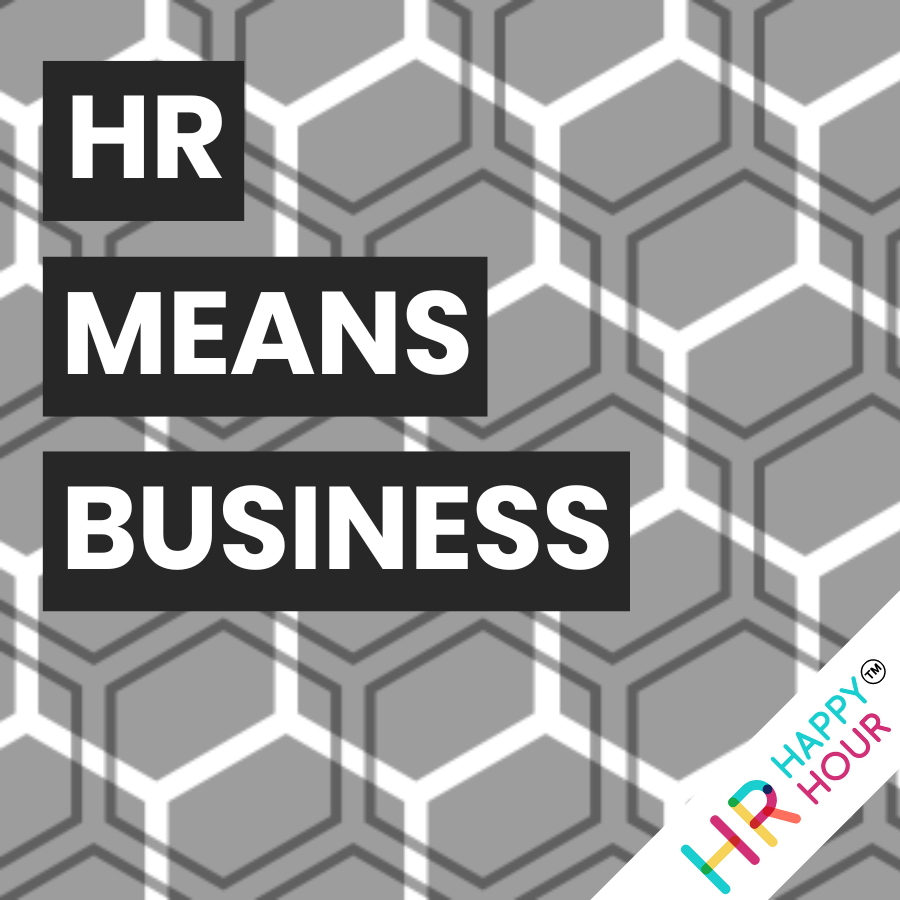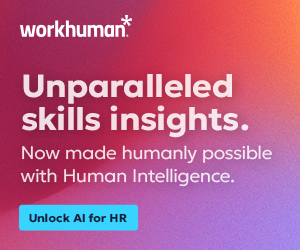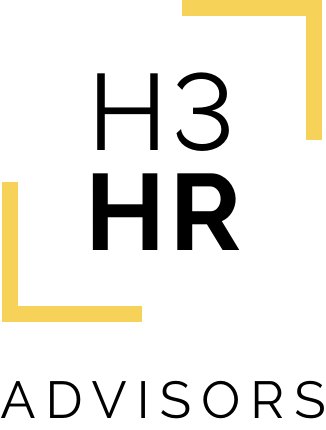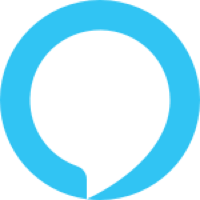Managing and Engaging a Multi-Generational and Multi-Skilled Workforce
Hosted by

Mervyn Dinnen
Analyst, Author, Commentator & Influencer
About this episode
Managing and Engaging a Multi-Generational and Multi-Skilled Workforce
Host: Mervyn Dinnen
Guest: Catherine Hambleton-Gray, People Director at Eurocell PLC
In this podcast interview Mervyn talks with Catherine Hambleton-Gray, People Director at Eurocell PLC, a FTSE100 listed company in the construction and building supplies sector. During the conversation they talk about Catherine’s experiences of bringing a culture shift to an organisation with diverse people, needs and locations, helping to create a more engaged and purposeful workforce.
During the conversation they discuss :
- The challenges of engaging a multi-generational and multi-skilled workforce
- Consistent, meaningful communications within a locationally diverse organisation
- Senior leader visibility
- Improving engagement
- Establishing initiatives around wellbeing, mental health and EDIB
- Creating a relevant and informative careers website to give new hires a better understanding of roles and prospects
- Obtaining, and acting upon, employee feedback
Thanks for listening! Remember to subscribe to all of the HR Happy Hour Media Network shows on your favorite podcast app!
Transcript follows:
Unknown Speaker 0:00
Music.
Mervyn Dinnen 0:18
Welcome to the HR Means Business podcast, which is part of the HR Happy HourNetwork. I am your host, Mervyn Dinnen. Two of the HR topics that I’ve been following this year are the challenges of managing a multi skilled and multi generational workforce. There was a lot written at the beginning of the year about the Forgotten 80% the frontline, often blue collar workforce, who are often not included in company messaging and engagement initiatives. And the other topic, I suppose, is the expectations of the emerging Gen Z workforce, which has taken up, obviously, a lot of digital narrative. It’s an honor today to be able to speak to Cat Hambleton-Gray, the Chief People Officer at Eurocell, which is a large publicly quoted organization in the building supply sector in the UK. Cat, welcome to the HR Means Business podcast. Would you like to introduce yourself and tell listeners a bit about your background?
Catherine Hambleton-Gray 1:11
Yeah, I’d love to thank you. So yeah, good morning listeners. So I’m Cat, as Mervyn said, I’m the People Director at Eurocell, based in Derbyshire, and I’ve been working in various HR and learning and development roles for 27 years. I started my career in learning and development and then moved into generalist HR roles in 2006 when I was working for B and Q, obviously, a big retailer in the UK. And I’ve been leading HR teams in various companies since 2006 I joined yourself January the second this year. And I’ve got to say, I’ve had the most fabulous seven months in my current role with my current team in a brilliant business which I’ll share more with you about shortly.
Mervyn Dinnen 1:49
Can you tell listeners a bit about Eurocell? What type of company you are, what are the main business units and how you operate?
Catherine Hambleton-Gray 1:59
Sertainly. So Eurocell is the UK’s largest manufacturer, distributor and recycler of UPVC products. So we have various elements to the business. So we’re a vertically integrated business. We have around 2100 employees as of today, and they are situated across our various sites. So if I start sort of in a logical sequence, we have our manufacturing plants. There are a couple of those based around our head office in South Normanton, Derbyshire. So our manure manufacturing plants, provisionally and primarily extrude lengths of profile, so plastic profile, which then are sent to our various fabricators. We work with around 400 independent fabricators nationwide who turn those lengths of plastic profile into, as an example, Windows, which obviously that gets sold on to the public. We also do move those products, so we have a supply chain and logistics warehouse into our own branches, and we do sell those products from our own branches, which brings me onto the branch network. So we have manufacturing plants. We then have our branch network, which is around 212, branches nationwide, who sell our products, but also other other PVC products, which we procure and then sell on to our customers, who are predominantly trades people, as opposed to retail customers, probably like myself and yourself.
Catherine Hambleton-Gray 3:16
Mervyn, so it’s not very often that sort of Yeah, end consumers actually go into our branches. It would be more likely to be the trades people that we would be dealing with to do jobs around our homes. So yeah. So the two arms manufacturing branch network, we also have our two recycling facilities, one in ilcaston, one in Selby, absolutely amazing places. So clearly, one of our huge goals as a business is around sustainability and our ESG agenda. So our two manufacturing plants, and I was honestly amazed when I went to these during my induction period, are just phenomenal sites. We literally prevent hundreds of 1000s of tons of PVC going to landfill every single year. So it is literally crunched through huge pieces of machinery and very intricate machinery, and goes through a lot of different cycles, which then turns it back, basically into pellets, which go back into the manufacturing process. So a really sustainable solution. We also have two other parts of the business, which are SNS plastics, which is an injection molding plastics business, again, based very close to our head office facility in Derbyshire. We have a door business, a composite door business called Vista panels based over in Merseyside.
Catherine Hambleton-Gray 4:27
And along with our manufacturing sites, I’ve mentioned that the supply chain and the logistics side, we also have what’s called our secondary operation, which is foiling. So to you and I again, and to lots of people who I’m sure are listening when people have what appears to be colored PVC products in their homes, windows, especially a lot of people are going for the gray color Windows these days that’s actually produced by a process called foiling. So again, the final sort of part of our manufacturing process is that falling process. So lots of different arms to to your cell.
Mervyn Dinnen 4:58
It sounds quite a complex, I suppose, organization. I’m guessing you’ve got quite a varied, multi skilled, multi generational workforce. You joined the beginning of the year. What kind of challenges did you face, and how did you set about, I suppose, identifying them and beginning to address them. Given the, I suppose, the range of diverse needs across the business.
Catherine Hambleton-Gray 5:25
Yeah, you’re absolutely right. One of them, one of the first things that I did was do a really good review with my senior team of exactly that, of who are our employees, because our role, absolutely in the people team is to look after those employees all around the employee lifecycle, in the various stages of that. And you’re absolutely right. We have a real multi generational workforce here, the fenestration industry, which is what we’re primarily in. It is historically available, very male dominated business, but we do also have quite an aging population and aging workforce who are just industry experts. I mean, we have some people within our business who genuinely are classed in the industry as the leading experts and the most knowledge. Also, if I take our Head of Product Development, I mean, he’s been in the industry years, and literally as a source of knowledge for a lot of people outside of uracil um nationwide, because his knowledge is just so, so fantastic. But at the opposite end, we also attract, as an example, school leavers, especially in the local area, who are looking to get into an industry don’t necessarily have a career plan in mind, but see yourself as a big employer in the local area, and actually what we can offer is a fantastic career throughout the various different elements of of our business.
Catherine Hambleton-Gray 6:34
So I just tried to really assess where we were up to in all areas of the employee life cycle. When I first arrived, I think probably one of our biggest challenges is communication, and we can come on to that in a bit more detail. But how do you communicate out to multi site? First challenge hugely different age diversity, population, because we are in a digital age and a digital era. But actually, not all of our colleagues want things digitally. And again, you have a lot of people who don’t have a eurosl email. They are working within our manufacturing plants. They’re working within our branches. So communication in itself is one of our biggest challenges, which I know a lot of other businesses face, as well as areas like well being. So particularly, you know, we are a very male dominated business. We’re about 85% male, 15% female currently in terms of our our diversity split on gender, and that is something that we’re working on. So we very much recognize things like women in construction week, and we have actually two very senior females in post. So our head of manufacturing and head of recycling are, interestingly, both female and very experienced in their fields, but topics like well being, especially in our our industry, very, very important in terms of, how do we address that challenge, and again, how do we get out to people in the various locations? So we’ve really started to look at things like communication, well being, our equity, diversity, inclusion, belonging plan, which we’re really going to do a lot on next year, but just some basics as well with, as I said, communication. You know, how do we really engage with our population?
Catherine Hambleton-Gray 8:11
And when we look at the results that came from our engagement survey, which happened pre me joining, how do we address some of those issues that were coming up? So one of those things was actually visibility of senior leaders. So Darren our CEO, who joined the business around May time, 2023 he made it his mission this year to visit as many of our branches out in the network as possible. He’s on track to be a well to have visited pretty much every branch by year end. So he was out again yesterday with one of our regional managers. So we’re really making an effort as a senior team to be far more visible throughout the whole business. One of the other things that was really apparent when I arrived, we just literally launched our new strategy, purpose and values. So this had all been signed off by the board and CO created across the various management teams in the business just before I joined, but one of the biggest challenges immediately when I landed was, how are we going to communicate this to the business? So we’re really lucky that our great marketing team had already come up with a plan to do virtual conferences. But again, you think about, okay, this is a brilliant opportunity to engage our whole population, but we have all of our teams who work various different shifts, and some of those people work in continental shifts in a manufacturing plant. So how are you going to get our strategic messages out to them? How are you going to get it to the branches where they don’t all have a PC that they can sit around? We can’t just take people and shut the door and not serve any customers for half an hour while they watch the video. So we came up with this idea with the marketing team with this virtual conference, and it actually worked really well. So that happened back in February, and every single colleague had the opportunity to actually either sitting on a group session where they could watch the virtual conference or watch it individually. So for people who had office, quite easily, they could simply watch at their desk. So I guess you know, in summary, very similar. Challenges, probably to other people. How do you communicate with multi site and multi generational and keep those populations engaged? How do you address well being? Because, again, the needs of people in different age groups are very, very different, very different, and especially with us being so male dominated, because we know that, you know, men are typically and there’s lots of stats out there don’t want to talk about their mental health. So how do we address, you know, situations like that, equity, diversity, inclusion, very important. And again, when people are spread across various different sites, how do you just really, you know, get on sort of stuff like that. So, so some pretty typical challenges, I would say, in our business that we’ve identified, that we’ve really started working on this year.
Mervyn Dinnen 10:43
Are there any around engagement? Because obviously, from the way you’ve described the workforce, you’ll have some people to whom any engagement initiatives are just not on their radar. I mean, how have you, I suppose, address, you know, employee engagement across all the different levels, as you said, obviously different locations, different levels, people doing very different things within the same organizations, and I suppose, particularly for those who aren’t office based or based in a specific place all the time.
Catherine Hambleton-Gray 11:15
Yeah, so there was already actually quite a lot of activity happening before I joined. So the business has done a pulse survey for the last few years, at which which my team administered and managed. And once those pulse survey results came back in annually, the management teams, along with the HR business partners, really delved into the results and held various different action planning sessions with the various teams, you know, and that was across branches and on manufacturing plants across the whole business, just to really focus in on what those specific teams were feeding back in the survey. Clearly, there’s been some bigger feedback at company level, hence, things like the virtual conference. So, you know, a lot of our colleagues, and some in more junior roles or some in those sort of remote sites, just weren’t clear on, okay, what? What is the strategy of the business? You know, we never get any business updates. We want to get more business updates, but we just don’t get that. So the virtual conference was in direct response to that, to really go out and help the whole population understand what our strategy is and actually what part they play. There was quite a lot of feedback as well about culture, about values, about whether people did or didn’t feel valued. So again, it was, it was decided before my time, but the business had come up with these four brilliant values, which are very simply, agile, gritty, proud and decent. So in terms of how we’ve engaged colleagues in those it’s still very much in its infancy, but we’ve done things as an example, like we’ve set up two two email inboxes, and we communicated this out across the whole business.
Catherine Hambleton-Gray 12:43
So one of those inboxes is simply proud@eurosl.co.uk it can only be accessed by internal colleagues, but we’ve encouraged colleagues to start recognizing their other colleagues and other teams by emailing the proud inbox. I’m really pleased to say that actually it’s only the third month that we’ve been doing this, but this month, we had 40 nominations. The first couple of months we had about 10, but it’s really ramped up. And so the word is starting to spread. So we’re really starting to bring the values to life. And brilliantly and really pleasingly for me, those nominations are coming from right across the business. So we’ve got colleagues across all different parts of our business, nominating teams. We also launched a decent@eurosl.co.k.co.uk sorry, inbox. And yes, like most businesses, we have a grievance process. We have a whistle blowing process. But this decent at Euro inbox is just simply to help colleagues if they’re not quite sure where to go to but they see something that they just don’t feel is decent, or something’s just, or someone’s not behaving in a decent way within their business unit, where we encourage them to email the decent inbox, just so none of us start walking past things that go against our values. Interesting that we’ve had far fewer into that, which is a good thing, because it means that actually the business is operating in a decent way, but we’ve just done certain things, like starting to bring those values to life. Values to life, and again, that helps with that whole cultural feel, and people feeling more connected to the business. And as I’ve said, things like visibility of senior leaders. Darren is doing a great job of going out and visiting branches and really being present and visible in our branch network.
Catherine Hambleton-Gray 14:17
As an exec committee, we’re doing things like and we’re actually starting next month, rather than hold our meetings in the office, which we traditionally do once a month, we will actually be holding our monthly meetings in different sites so that we can go and speak to colleagues, you know. So during our breaks, during meetings, we can go and speak to colleagues. We can do impromptu just, you know, how’s it going, conversations, and really get a feel as to what’s going going and happening out on the ground. So, so a number of things, you know, and there were some specifics absolutely about things like facilities out in our branches. So some of our branches are quite old buildings, facilities for colleagues to have their lunch break in, weren’t great. So we actually have a program to address some of those really key fundamentals out in branches. So the business had really started working on some things. From previous engagement surveys. Since I arrived, we have actually decided to go external and use an external provider, and we’re actually moving to quite a different survey in September this year. So our new survey will actually go live in four weeks time. We’ve gone with a provider who, rather than just simply looking at engagement on its own, which you know a lot of businesses do, and that’s absolutely fit for purpose, and I’ve done that historically. This survey looks at how people are feeling about your strategy, how people are feeling about the culture, and how engaged they are. So we just felt this specific provider at this point in time would give us some brilliant, brilliant Intel so that we can continue to work with colleagues on engagement. Right across the business.
Mervyn Dinnen 15:44
You’ve got a lot going on there, Cat
Catherine Hambleton-Gray 15:46
We do. I’m looking at a great team to support me with it.
Mervyn Dinnen 15:51
Some quite foundational HR initiatives there, as well as, obviously some of the more, as we’ve said, engagement. How do you balance priorities? I suppose you’ve come in, you’re doing a lot. How do you balance the priorities to make sure, I suppose you’ve got both the immediate and the long term being met?
Catherine Hambleton-Gray 16:13
Yeah, it’s a great question, and it’s exactly what happened when I arrived with my team. We’ve had to be really strict with ourselves, I guess, and it’s simply all about planning. So you’re absolutely right. There were some foundational things which just weren’t quite where we wanted them to be at eurosl. And as I said, I’m very lucky. I’ve got a super team who worked for me, you know, who, again, stretched the length and breadth of the country, who were just so committed to Eurocell being a great place to work. So we simply pull together a really clear plan for the next three years. So we had to be quite strict and quite tough on ourselves and really challenge ourselves as to, okay, which pieces of this are foundational, that are just priority we have to get done this year, and which pieces of work, yes, whilst they’re important, actually are too important to not do well. So two great examples, and we’ve mentioned this previously, our well being and our I call it EDIB, equity, diversity, inclusion, belonging, plan, well being and EDIB are so important at eurosl. And yes, we do have things in place under both of those headings currently, but actually we don’t have a really clear vision and plan as to where we want to get to with those two really, really important subjects.
Catherine Hambleton-Gray 17:26
So whilst it’s really important and we are doing some stuff in the background, we decided to push those back into next year’s plan, because the risk was that we would start to try and do things but do it badly. So it was simply a case of us going through the priority list really being tough on ourselves, assigning owners to each of the different headings on the plan and just starting to work through, you know. And I’ve just got some really good disciplines in place with my own team, where we, obviously, we do review the plan very regularly. We involve people from my wider team, you know. So a lot of the wider team have got interested in specific parts of the HR agenda. So actually, let’s get them involved with their development. So yeah, we’ve pretty much just been very strict with ourselves, and have a plan and we stick to the plan.
Mervyn Dinnen 18:08
Sounds a good plan given, I suppose, the diverse nature of what we’re talking about, in terms of the roles, in terms of the people, in terms of backgrounds, in terms of physical locations, things like the recruitment process which is obviously quite important for you. Things like, I suppose, the company’s career website, your offering, how you put this across the kind of culture and opportunities that you offer people who join you? How? How do you make this relevant across the whole workforce? Given, you know, the locational challenges, the fact that the difference between office and blue collar workers, shall we say, trade, counter assistance, manufacturing. Have you had any particular success with any initiatives around recruitment and about making, I suppose the whole website and career journey more open and relevant?
Catherine Hambleton-Gray 19:00
Yeah, it’s actually a really relevant question, because we are we have just introduced very recently, a proper careers website. So when I joined, what we had online was simply pretty much a list of jobs. So if you used to type in yourself careers, you literally were presented with a list of jobs. My head of resourcing, along with various other teams within the business who were supporting had already started on the journey of creating our careers website, and we’ve currently launched phase one. So if anyone were to type in eurosl careers or careers at eurosl, what you now have is a slightly better offering online where it does tell you a little bit about the business. We have an agency part which any agencies who want to work with us can go to, because we get inundated with agencies who want to work with us, and then obviously the contact us page and the jobs list. So phase one has gone live. Phase two and three are in progress and actually imminent to go live, where it will have case studies, it will have testimonials, it will have far more information about benefits and what you actually get back from being yours. Our colleague. But we were really conscious throughout this whole process. And as I say, all credits are my head of resourcing and the various different teams who’ve supported with this internally, we were really conscious that actually the majority of roles that we recruit for each year are what we call our TCAD role, which is our trade counter assistant and driver role out in our branch network, but also extrusion operatives and falling operatives who work in our manufacturing plants. So they are the volume roles that we recruit for each year and recruit more of so the website had to really appeal to those people.
Catherine Hambleton-Gray 20:34
And any job adverts that we put out, anything that we put on LinkedIn, and even there is a question about, do some of those populations actually go to LinkedIn to look for jobs, because our research tells us, no, actually, they’re probably not looking on LinkedIn for those jobs. So we’ve been really conscious of really appealing to those key populations. So even the language that we use, you know, we were quite critical of ourselves, I guess, as we were reading through the drafts of the website to think, Okay, if one of my team was maybe looking for a role, okay, yeah, that had really appealed to them. Would that appeal to a TCAD? Probably not, and it’s really important that they they see a page that appeals to them. We, interestingly, we’re about to go live with something in the next couple of weeks, which is quite exciting. So again, my head of resourcing. I can give her all the credit for this. We’re going to try and use avatars on some of our recruitment ads, and we’ve got lots of data that tells us when we’ve put videos on our adverts before, or where people can like people can actually see someone like them talking about the job that they’re going to be doing and really helping them understand what the job role is. In reality, our application rate and our conversion rate of applications really increases. So we’re about to start using some avatars, and these avatars are just amazing to really just connect, I guess, with those key populations. And you know, it is in its infancy, it may not work. We’re hopeful it will work, but I think it is just about connecting with those people and what we’ve become really conscious of. Because one thing I have introduced since I arrived, and again, a couple of my team have managed this process for us. We’ve introduced some on border and exit surveys, again administered by a third party, and we were doing some of this stuff internally, but the take up rate just wasn’t great on either of those things historically.
Catherine Hambleton-Gray 22:22
So that’s no disrespect to the people who put them in place. It’s just that we didn’t really have the response rate to give us any really valid data. So we’ve gone through a really credible external third party to get an onboard, a survey from new starters, or new starters in the business, and then exit surveys from leavers, just going through the trial of that over a three month period, we’ve had on average, sort of 45% response rate, which, you know, still I get it, it’s 55% of people not responding. But especially for exit interviews, that’s pretty great. And that’s three times the response rate we were getting from an internal process. So those on border surveys, especially are giving us some really great data on what people’s expectations were pre joining your cell into the role that they were going into, and actually have those expectations been met for six weeks in so from some of that data, this is why we’re going down the route of using these avatars on the job ads, because we know that for some of our populations, What they thought they were coming to as the job hasn’t quite actually been exactly what they found the job to be. So, you know, the more realistic we can be, the more information we can give them upfront so that they can make a really clear choice about whether the role is for them, the better. So what we’re in a process of doing, I guess, at the minute, is tying together a lot of information to just try some new things to see if they work in that recruitment space. I know that’s a very long answer to the question, but hopefully it makes sense.
Mervyn Dinnen 23:50
Well, it’s fascinating. It’s important as well, because I’ve spent the large part of my career around talent and hiring and engaging and yeah, I mean, one of the biggest reasons for people dropping out is the job wasn’t what they expected it to be, that culture wasn’t what they expected it to be. And so to be able to give people, particularly those joining you, who maybe don’t have, as you say, the range of options they’re not on LinkedIn, looking at new jobs being shared all the time, to give them a realistic job preview is obviously quite important. It’s been, it’s been fascinating talking to you, because it’s, I’m sure this will resonate with a lot of listeners, because there’s a lot of people in organizations that are quite complex, quite you know, multi, multi disciplined, who obviously have to address different parts of the business, and maybe bring in some new initiatives. Is there anything given you you’ve been doing a lot in your first six to nine months? Is there anything you’ve got planned coming up over the next year? Kind of new initiatives that you think are important?
Catherine Hambleton-Gray 24:54
Yeah, some really great stuff. So as I said, if I think about the whole world. Equity, diversity, inclusion, belonging. You know, the company has done some stuff in the past, but we’ve just never had a really clear plan. So we recently actually became members of the construction inclusion Coalition, which is quite a new sort of body within the construction industry that has been set up so that companies within the construction industry can actually all come together to firstly, share best practice around what they are doing, around diversity and inclusion, to also think ahead and start talking and planning ahead as to actually What does or doesn’t work in the industry. And how can we become a more inclusive industry, just overall, and just, you know, how? How do we appeal to different populations so that actually, the construction industry, in its entirety, becomes far more diverse and far more inclusive than people maybe perceive it to be currently. So, yeah, so I’m delighted that we joined the the CIC back in May. I’m actually going to their annual conference. I say it’s an annual conference. It’s their first conference, first of October. So we’re really excited about that, because we think that’s going to be really instrumental in helping us create our EDID plan. We’ve recently recruited a new internal communications manager who’s now part of my team, and again, we’re just really trying to listen to colleagues, and I’m really fortunate that we have a lot of different listening groups that happen across our business. So one of our senior non exec directors, she does board level listening groups, which have gone down really well over the past 12 months. Lots of our managers across our various different sites do listening groups. They all feed that back in.
Catherine Hambleton-Gray 26:35
So now that we’ve got my new internal comms manager, we’re really trying to process all of that feedback together to help us build some of these plans. So a great example, Mervyn is a very simple one, but I joined the business January. I was approached by some colleagues in around May time to say, are we going to recognize Pride Month? And at that point, we hadn’t anything on the plan, and we hadn’t intended to really do anything for Pride Month. But obviously, a lot of businesses in the UK do recognize Pride Month. So we simply asked those colleagues, what would they actually want to do? And what they said to us was that even if we just put the pride flag up on the flagpole at the office and explained to people, you know, what that was about, it would be a real step forward. So we listened to their feedback, we asked quite quickly, and within two weeks, we had a pride flag up. We wrote an article for the newsletter. Well, one of the colleagues actually wrote an article for the newsletter to explain what the pride flag was all about and what pride month was all about. So we’ve taken some baby steps, but listening to our colleagues to help us create those plans is going to be increasingly important.
Mervyn Dinnen 27:41
Ok, Cat, there’s been a lot to digest here. I’m sure there are people who listen to this, who’ll be interested in, I suppose, maybe finding out a bit more or kind of, maybe getting a bit more insight. I mean, is what’s the best way for people to contact you or connect with you?
Catherine Hambleton-Gray 27:58
I am on LinkedIn. I’m just actually looking what I’m down as on LinkedIn. I think I am simply down as Catherine Hamilton Gray, I am, yeah, so they can contact me on LinkedIn. They could drop me an email at Eurocell, just cat.Hambletongray@eurocell.co.uk more than happy to talk to anybody. Yeah, yeah, make contact with anybody, and it’s always great to share, isn’t it, with with people from different industries who are kind of facing the same challenges. I actually spoke at an event a couple of months ago, and it was mainly retailers. Actually. It was something that I agreed to do and committed to before I joined eurosl. And everybody in most sectors are facing the same challenges at the moment, so it’s always great to connect with with fellow HR professionals.
Mervyn Dinnen 28:46
Okay, Cat, it’s been a pleasure. Thank you very much for your time, and good luck with the the initiatives over the rest of the year.
Catherine Hambleton-Gray 28:53
Thank you very much.
Transcribed by https://otter.ai
Talk to us
If you want to know more about any aspect of HR Happy Hour Media Network, or if you want to find out more about a show topic, then get in touch.









